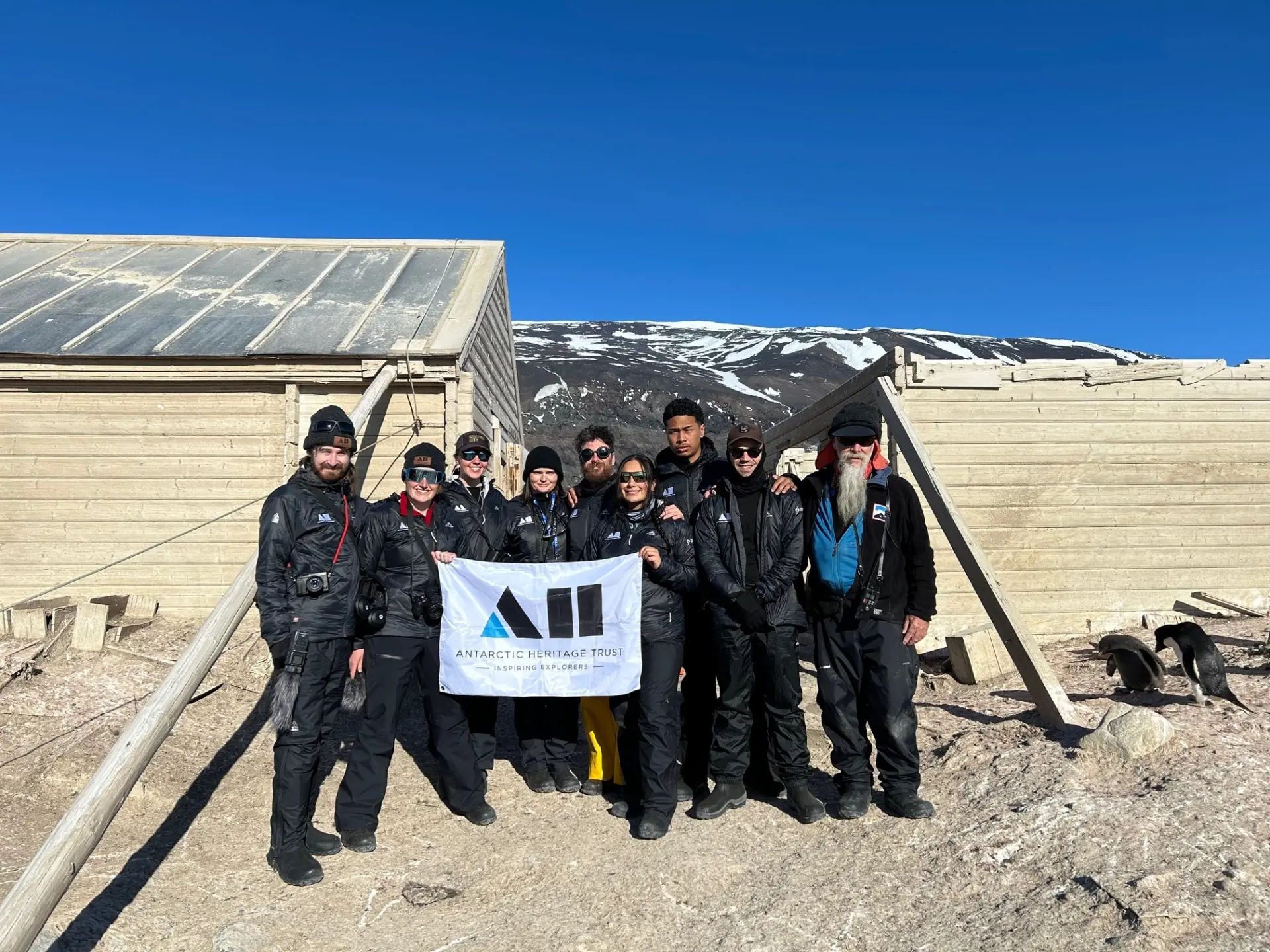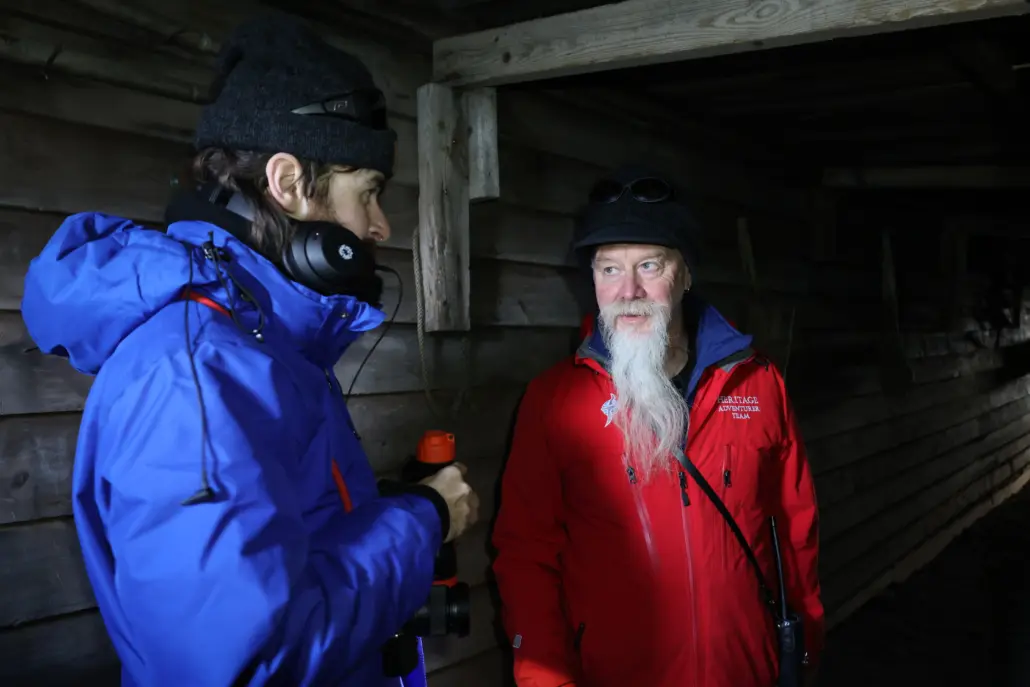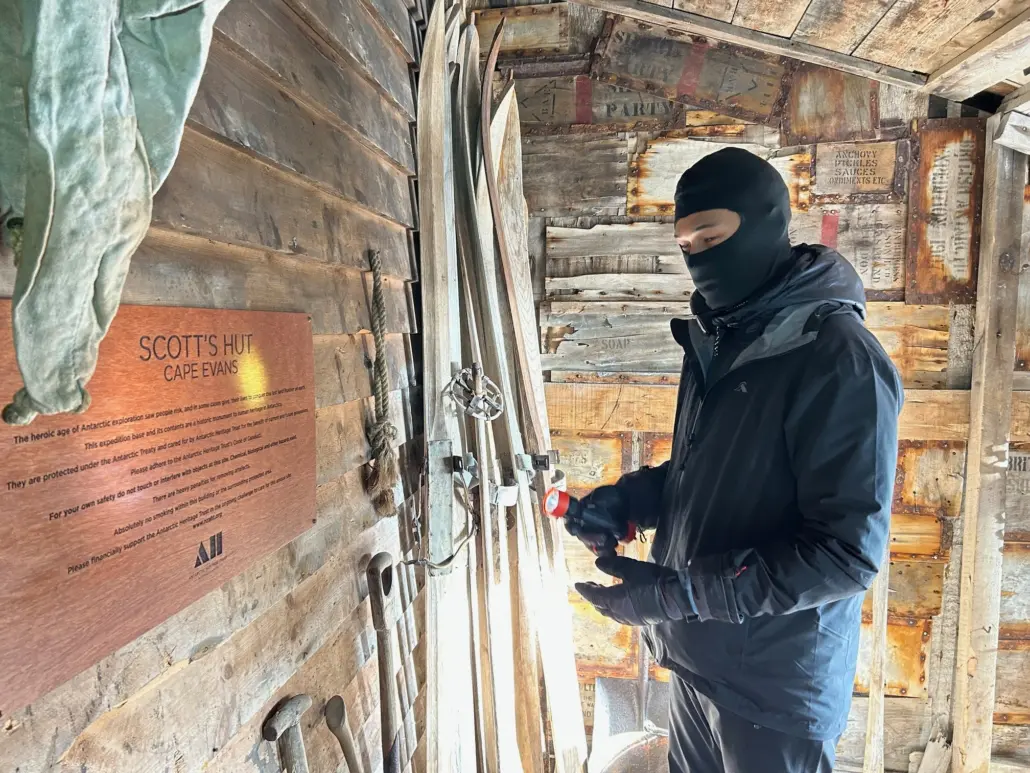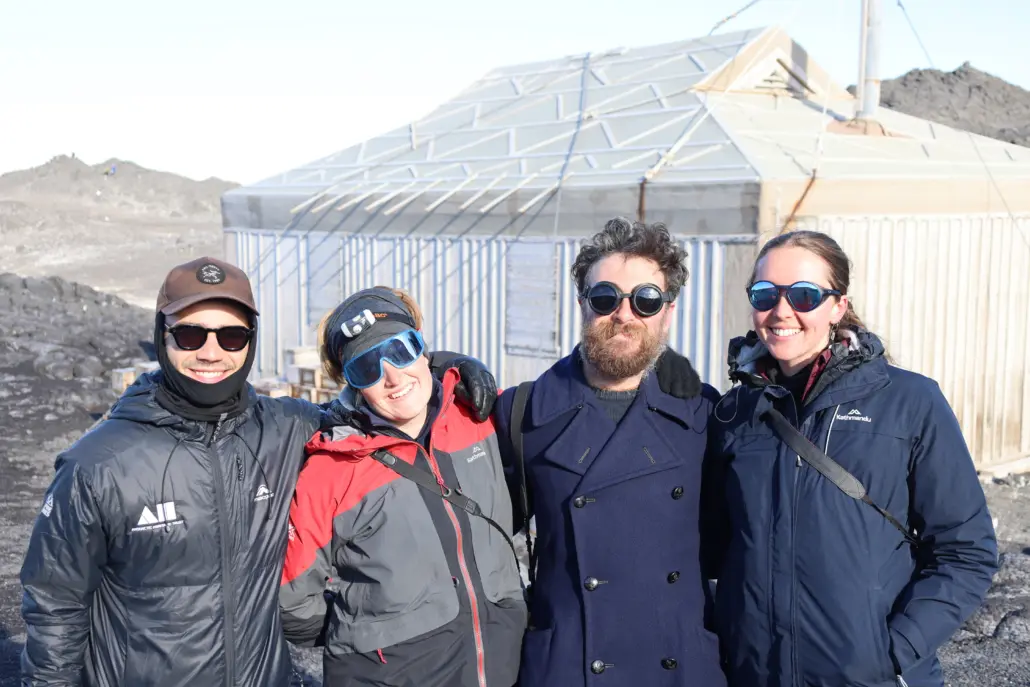Next Generation Step Inside Explorer Bases
Antarctic scenery, wildlife, history, heritage and heroes were among highlights of the Trust’s Inspiring Explorers Expedition™ to the Ross Sea in January 2025.
The group marked the tenth anniversary of Antarctic Heritage Trust’s Inspiring Explorers™ programme by learning more about Antarctic exploration thanks to expedition partner Heritage Expeditions and supporter Cheshire Architects.
This was the first time the Trust has taken young explorers to experience the legendary Antarctic explorers’ bases and understand the Trust’s conservation of them.
Thanks to favourable weather, sea-ice conditions and significant efforts by the polar vessel’s crew, the group visited all four heroic-era huts the Trust cares for.
The Inspiring Explorers™ brought their interests and skills together to capture content for a podcast series about the expedition and the Trust’s work to safeguard the continent’s cultural heritage. They were accompanied by Al Fastier, who shared his extensive knowledge gained through leading the Trust’s Ross Sea Heritage Restoration Project for 18 years until his retirement last year.
The eight – Kitiona (Billy) Pelasio, Lucy Hayes-Stevenson, Maia Ingoe, Louise Piggin, Calum Turner, Ngawai Clendon, Jake Bailey and Daniel Bornstein – say Al’s explanations enhanced their visits.
Calum says “Something that really stuck with me from Al was what he called ‘spirit of place’. When we were in these huts, we felt the spirit of where we were and the stories of what went on there, and connecting with that. There was a moment when he got us to be quiet in Scott’s Cape Evans hut, to be there in silence, and just feel it. That was really special and something I will take with me to future places I know have historical significance.”
Maia agrees. “Al taught me the importance of having history in context and how important it is for these historic huts to be in the same place as where it all happened, these isolated and extreme environments in Antarctica. His depth of knowledge, depth of caring for these places, and willingness to share that has been nothing short of inspirational.”
Gathering audio for the podcast series the group will release was an interesting exercise for them. The group found themselves surrounded by a different kind of silence, among noisy penguins, out to sea, or fighting to stand up in strong winds, and say the experience heightened their senses.
Calum says “There’s this brilliant opportunity to listen, whether it’s penguins, leopard seals or the way waves lap under ocean ice, carving out little caves with icicles, something you wouldn’t even really notice unless you can hear it.”
The expedition bases of famous explorers each offered a different perspective for the Inspiring Explorers™ and have left a life-long impact on them. They visited:
- Cape Adare, home to Antarctica’s largest Adélie penguin rookery (more than a million penguins!) and Carsten Borchgrevink’s hut, the first building constructed in Antarctica and the only example left of humanity’s first dwelling on a continent;
- Captain Robert Falcon Scott’s Terra Nova hut at Cape Evans, the largest historic structure in the Ross Sea region and, thanks to seven years’ work by 53 specialists from 12 different nations, home to almost 12,000 items left behind by the explorers;
- Sir Ernest Shackleton’s Nimrod Hut at Cape Royds, the focus of six years of Trust conservation work on more than 6,100 artefacts; and
- Scott’s Discovery Hut at Hut Point, today the most visited historic hut due to its proximity to the US and Kiwi Antarctic programmes.
The young explorers say actually standing inside the huts was a physical experience they can’t forget.
In Shackleton’s hut, Kitiona “Billy” Pelasio said “As I stepped through the door, I got a nostalgic vibe, like they are still here, not visibly, but you can feel them.”
“I felt a lot of wairua in Te Reo Māori, in English that is spirit,” said Ngawai Clendon. “The spirit of the ancestors who came before us. Shackleton showed bravery to go on such a journey.”
Comparing visits, Lucy Hayes-Stevenson said “At Cape Adare, I felt the isolation and vulnerability, at Cape Evans I felt the loss, and at Cape Royds I felt a real sense of comfort and camaraderie and happiness.”
The expedition has definitely left its mark on the young explorers.
Ngawai says she appreciates what she calls the significance of adopting the ‘Explorer Mindset’. “It instills in me the understanding that with dedication, humility and focus, I am capable of achieving remarkable feats.”
Expedition Partners and Supporters
The Trust is grateful to the generous partners and supporters who made this expedition possible.
As the Trust marked its tenth year of the Inspiring Explorers™ programme, expedition partner Heritage Expeditions was marking 40 years as New Zealand’s first and only expedition cruise company.
Commercial Director and Expedition Leader Aaron Ross says it was a pleasure to have the young explorers on board.
“The Inspiring Explorers™ certainly lived up to their name. Everyone on board witnessed the dedication and passion of the next generation of custodians and ambassadors, and agreed the future of the Ross Sea is in good hands.
“Sailing as far south as possible meant we were always going to be at the mercy of the elements, but our experience helped get the team to Hut Point to return an artefact. We look forward to following the explorers’ future adventures and how they will help shape the world for the better.”
Thanks also to donors to the Inspiring Explorers™ Fund, and supporter Cheshire Architects.







